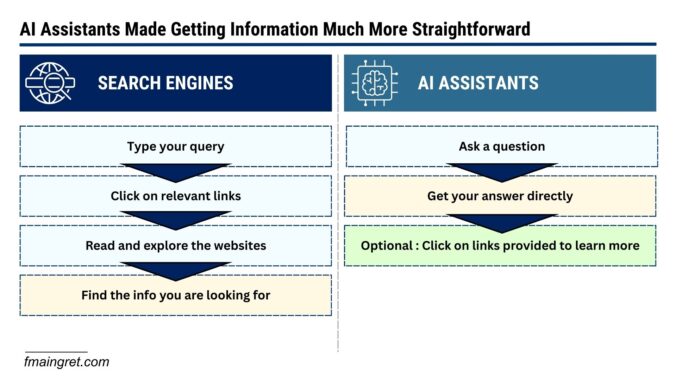It’s a rare day when I don’t see complaints about the fees Amazon and other platforms charge. And I understand, the cost of doing business online is becoming unsustainable for many SMBs.
Is the solution to emulate China’s e-commerce regulator and ask platforms to charge reasonable fees and better support small businesses?
Would that encourage people to start businesses and innovate, or would that create even more clutter on these marketplaces? Not to mention how complex this would be from a legal standpoint.
Ideally, we would be able to see new sales channels emerge, with more reasonable fees, that would allow SMBs to breathe. But network effects make it very difficult for new entrants to grow. And it looks like whenever a platform reaches a critical size (Amazon, Walmart, eBay…), it aligns its fee structure close to the ever-increasing industry standard. I am not saying there is price fixing among e-commerce giants, but this creates a very difficult environment for sellers.
What is the solution? At a large scale, I don’t know. At a smaller scale, it is more important than ever for businesses to create products and services that have healthy margins and don’t only rely on sales channels they don’t fully control.
Author: Francois Maingret (Page 1 of 15)

SEO Isn’t Dead But It Isn’t the Only Game in Town : How to Prepare for the Rise of Generative Engine Optimization
I remember that not so long ago, Google was the undisputed king of information online. You needed to know how to fix your sink, figure out how much weight a gorilla can bench press, or buy some new sweatpants? Chances are, “Googling it” was your go-to first step.
Fast forward to 2025, and our behavior has completely changed. You might search TikTok or YouTube if you want to learn how to fix something. For shopping, many customers now start directly on Amazon rather than Google. And of course, we now have AI assistants like ChatGPT and Gemini, which offer compelling new ways to find the right products or services for us.
According to a recent study, 50 percent of fashion executives see product discovery as the key use case for generative AI in 2025, and 82 percent of customers want AI to help reduce the time they spend researching what to buy. With that in mind, it’s easy to understand that being cited by AI assistants will be crucial for businesses in the coming years—just like SEO was essential in past decades.
Continue readingRecently, Ulta Beauty announced plans to launch a marketplace featuring beauty and wellness products. Earlier this year, Best Buy opened its own marketplace. Large retailers are turning to this model, from Urban Outfitters to Michaels.
There are several reasons why they would do so: increasing revenue through sales and advertising fees, gathering valuable market data, and of course expanding their assortment without holding more inventory.
You may have heard recently about Amazon overtaking Walmart’s revenues for the first time.
But Walmart is far from being out of the game; I would say they are a serious competitor in ecommerce.
In 2024, Walmart delivered five billion items on the same day they were ordered, twice as many as in 2023. Amazon does not communicate its numbers, but the growth is impressive.
I don’t think tariffs alone will be enough to kill Temu, and I’ve written about how the company has adapted. But there’s another Chinese giant selling large volumes to the U.S.: Shein.
Looking only at revenues, you’d think Shein is in great shape, with a 19% increase in sales, reaching $38 billion. However, the company saw a significant profit decline in 2024, with net income dropping by nearly 40% to $1 billion—which may have delayed its IPO.
Over the last few years, Amazon has been throwing s**t at the wall to see what sticks. Not everyone can be Amazon, but not everyone can be TikTok either. So, I’m not surprised to see that Amazon is shutting down Inspire, their TikTok-like feed of shoppable videos posted by influencers and brands.
As Paul Drecksler explained in a recent post, people go to TikTok for entertainment, not just with the intent to shop, and Inspire lacked the entertainment part. I believe very few people are looking for Amazon’s version of QVC, and many people tend to rely on existing social media for product discovery.
Another reason for this failure, in my opinion, is the lack of influencers on the platform. People want to see content from their favorite creators, and Amazon struggled to attract talent. They were mocked for the low rates they offered: at one point, Amazon said they would pay influencers $25 per video, with a payout cap of $12,500 for influencers submitting up to 500 videos.
Amazon is great for capturing customers at the bottom of the funnel, but when it comes to product discovery, I think there’s a lot of progress to be made. Maybe a partnership or an acquisition would work better, because I don’t see how they could turn their shopping app into a media platform that can compete with TikTok or Instagram.
Based on this article from PYMNTS: https://www.pymnts.com/news/ecommerce/2025/66-of-consumers-look-for-free-shipping-when-online-shopping/
What stood out to me more in this report were these findings: “48% of consumers prefer online marketplaces for this very reason”, and among those who made most of their recent purchases on marketplaces, only “18% said better prices are the key factor”.
While pricing is important, customer perception matters just as much. A $30 order with free shipping may often feel like a better deal than a $25 order with $5 shipping, even though the total cost is identical.
A little special post today as I collaborated with Artur Stanczuk, founder of MarketMaze, on a report discussing Amazon vs. Temu. Artur and I have known each other for a little over a year and frequently discuss the evolution of marketplaces and e-commerce. Given our shared views on the future of e-commerce, we decided to work together on a comparison article about two e-commerce titans: Amazon and Temu.
MarketMaze is a twice-weekly newsletter that delivers insights, trends, and stories from the world of e-commerce and marketplaces. It covers major industry players like Amazon, Shopify, and TikTok Shop, as well as tools, marketing, and logistics. If you haven’t subscribed yet, I highly recommend it—MarketMaze reports are a goldmine of industry insights for e-commerce professionals. Artur Stanczuk is also active on LinkedIn and can be found here.
Continue reading